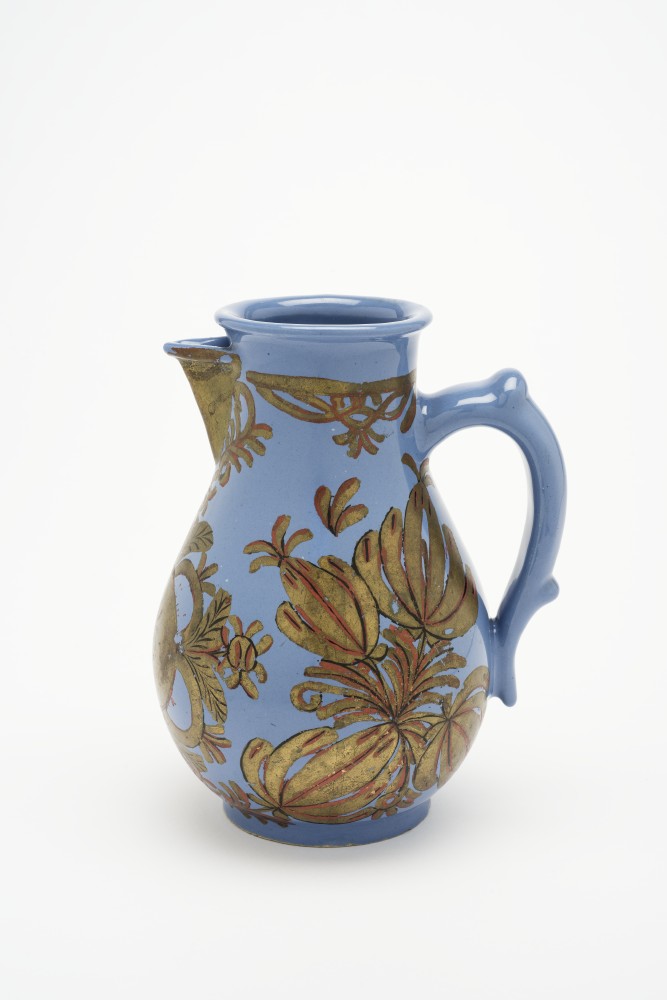Kanne mit birnförmigem Gefäßkörper auf Standring. Wenig ausschwingender Hals, an dem vor spitzwinkligem Ausschnitt der spitze Schnabelausguss angesetzt ist. Der spitz auslaufende Ohrenhenkel mit Astansätzen.
Über die ganze Wandung verteilt drei große stilisierte Blüten- und Knospenmotive, die von Blättern umgeben werden. Am Mündungsrand Zierleiste. Der Ausguss in Gold.
Bemalung teilweise stark abgerieben. Kleine Glasurabplatzungen am Fuß. Die Deckel fehlen.
Ohne Marke
Erwerbung unbekannt (alter Bestand)
en

